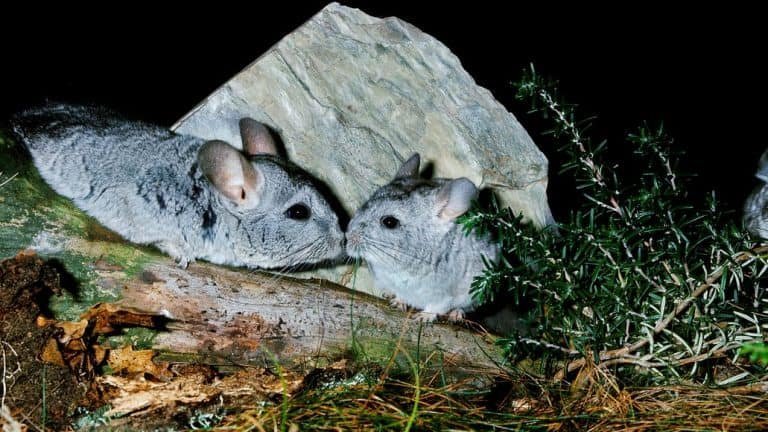
Here’s the thing: understanding genetics can feel a bit like decoding a secret language. You might be wondering how different traits are passed down or why certain colors appear. Don’t worry; I’m here to break it down step by step. So grab a cup of coffee, and let’s explore the ins and outs of breeding these wonderful creatures!
What Makes Ebony Chinchillas Unique?
Ebony chinchillas are a color variation of the standard chinchilla, and their striking black fur sets them apart. This unique coat isn’t just for looks; it’s a result of specific genetic combinations. The genetics of chinchillas can be quite complex, but essentially, the ebony color is caused by a mutation in a gene responsible for fur color.
When breeding chinchillas, breeders look for these genetic traits to produce the desired appearance. This often involves pairing certain chinchillas to ensure that the offspring inherit the ebony coloring. By understanding the genetic markers, breeders can predict the likelihood of producing ebony offspring. It’s like mixing colors on a palette—certain combinations yield beautiful results, while others may not!
If you’re considering breeding chinchillas, it’s essential to familiarize yourself with these genetic traits. Not only does this knowledge help in achieving the desired coat color, but it also plays a role in the overall health and temperament of the chinchillas.
Basic Genetics of Chinchillas
Let’s break down how chinchilla genetics work. They have various genes that determine their coat color, patterns, and even health traits. For chinchillas, color genetics can be a bit like a puzzle, where different pieces come together to complete the picture.
One major gene involved in the ebony coloration is the “E” gene, which is an allele that causes the black fur. When two chinchillas carry this gene, their offspring have a higher chance of receiving it. However, it’s important to note that chinchilla genetics can also involve other genes influencing the final outcome, leading to a range of colors and patterns.
For example, if you breed an ebony chinchilla with a standard gray chinchilla, there’s a 50% chance that the offspring will inherit the ebony trait, depending on the genetic makeup of the parents. Think of it like flipping a coin—sometimes you get heads, sometimes you get tails, and sometimes you get a mix!
Understanding these genetic principles can lead to healthier, more vibrant chinchillas. It’s all about knowing how to pair them effectively to maximize your chances of getting that ebony beauty you’re after.
The Role of Breeding Techniques
Breeding chinchillas isn’t just about luck; it involves strategic planning and a good understanding of genetics. Breeders often use specific techniques to achieve desirable traits. One popular method is called “line breeding,” where breeders mate animals closely related to maintain specific traits while avoiding genetics-related issues.
However, line breeding has its challenges. It can sometimes lead to inbreeding depression, where the animals may become prone to hereditary diseases or health issues. To prevent this, breeders may introduce new genetic material by bringing in chinchillas from different lines, thus enriching the gene pool.
Another common technique is crossbreeding. This involves pairing chinchillas of different coat colors or types to produce a broader genetic diversity. For instance, crossing an ebony chinchilla with a mosaical chinchilla may yield unique fur patterns or colors. Each new generation can surprise you—like uncovering hidden treasures in a box of chocolates!
Health Considerations in Breeding
Breeding chinchillas responsibly goes beyond just coloring; health is paramount. The genetics behind chinchilla breeding also play a crucial role in determining their overall well-being. Certain genetic traits can lead to health issues if not carefully managed.
For example, some chinchillas may inherit genetic conditions such as teeth misalignment or respiratory problems due to their lineage. As a breeder, it’s vital to perform health screenings to identify any inherited predispositions. Think of it as getting a check-up before committing to a fitness journey.
Breeders should also consider the age and health of the breeding pair. Older chinchillas might face more complications during breeding and birthing. Not only is it about producing beautiful chinchillas, but it’s equally essential to ensure their health and happiness.
Common Traits of Ebony Chinchillas
Ebony chinchillas are not just about their stunning black coats; they also have various personality traits that make them special. Generally, they’re known for being friendly, curious, and highly social. These little guys thrive on interaction, so if you’re thinking about bringing one into your home, be prepared to invest time in bonding.
Their playful nature can be both entertaining and rewarding. Ebony chinchillas often enjoy exploring their environment, and they can show off quite a bit of personality. However, like any animal, temperament can vary widely. Raising them in a nurturing environment helps foster their friendly disposition.
You might be wondering about their social needs—chinchillas are herd animals, so keeping them alone isn’t ideal. Pairing them with other chinchillas can create a happy and healthy atmosphere. Just like people, they thrive in companionship, often forming strong bonds with each other.
Ethical Breeding Practices
As fascinating as breeding chinchillas can be, it’s essential to approach it ethically. This means prioritizing the animals’ wellness over the desire for profit or aesthetics. Ethical breeders focus on producing healthy chinchillas and often participate in breed clubs or organizations promoting responsible breeding practices.
Part of this responsibility involves educating potential pet owners about caring for chinchillas. This includes proper diets, housing, and social needs. An ethical breeder should be willing to share their knowledge and provide guidance to new owners.
Additionally, breeders should avoid breeding chinchillas solely for profit. This practice can lead to neglecting the animals’ health and well-being. Instead, aim to breed chinchillas that not only look stunning but are also healthy, happy, and well-adjusted. It’s about creating a better future for these beautiful creatures.
Breeding ebony chinchillas is a rewarding yet intricate journey. By understanding the genetics and employing ethical breeding practices, you can contribute to the well-being of these charming creatures. It’s all about mixing the right “ingredients” to produce chinchillas that are not just beautiful but also healthy and sociable.
Whether you’re an experienced breeder or just starting, keeping these principles in mind will help you navigate the fascinating world of chinchilla genetics. With a little patience and care, you can be part of a community that cherishes and nurtures these wonderful animals for years to come.

